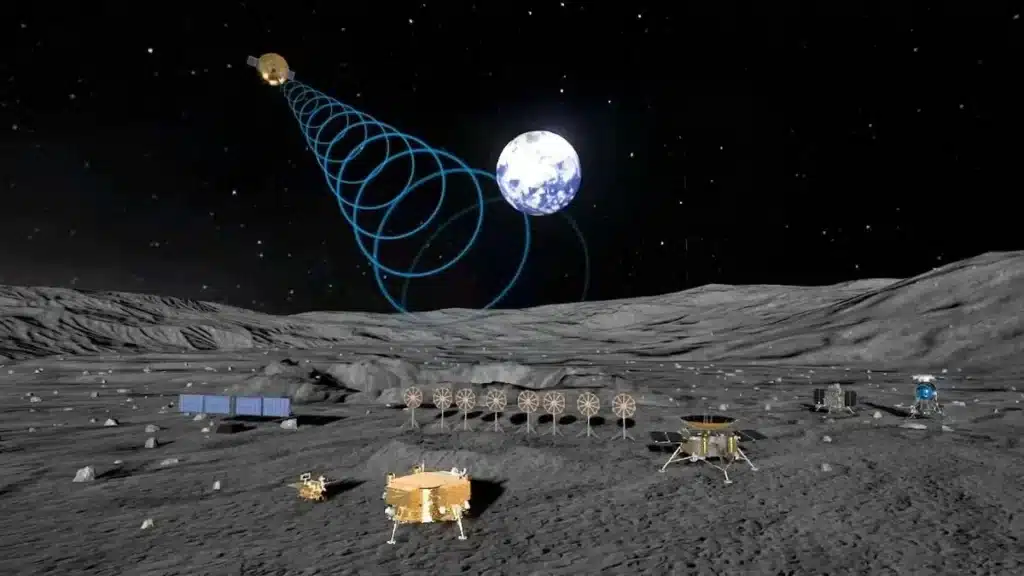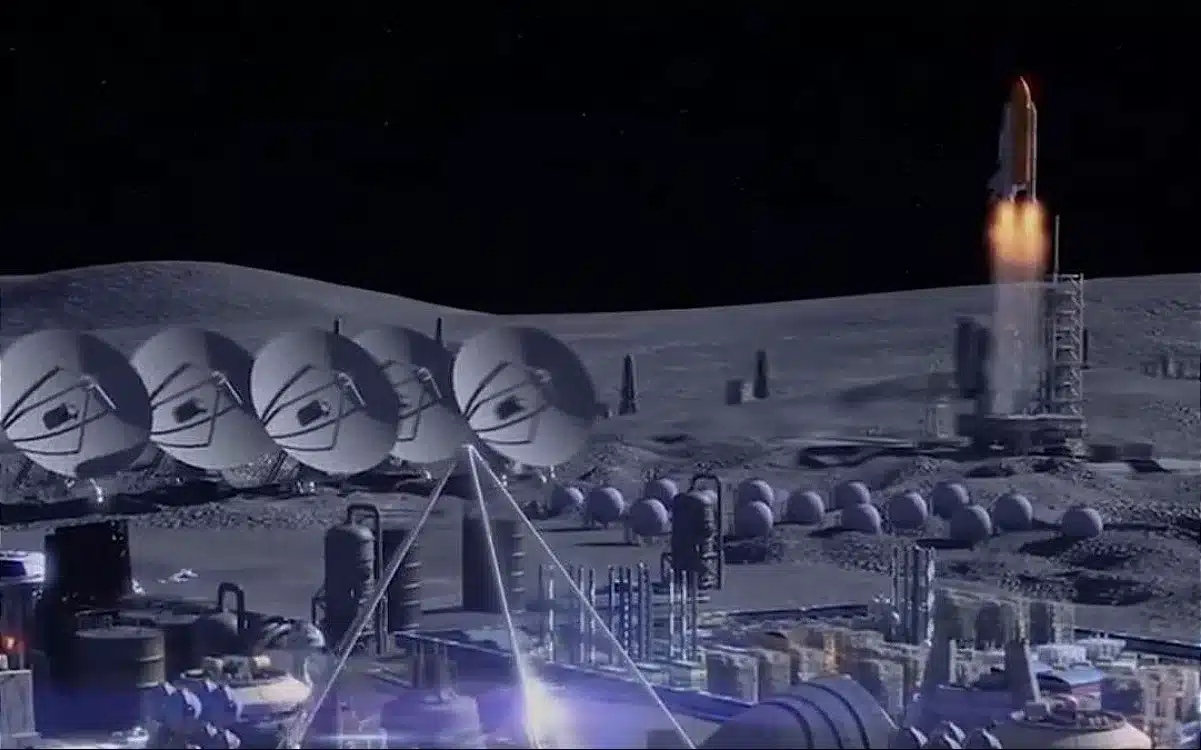Now that the ‘Space Race’ is back in full swing, every major power is trying to get a piece of the pie.
The China National Space Administration (CNSA) has released a juicy video of its concept for a lunar base.
The only problem is the video also includes something that, some might argue, shouldn’t be there at all.
READ MORE: NASA reveals lunar racer car that’ll transport astronauts to uncharted destinations on the Moon
When the video was released, keen-eyed viewers couldn’t help but spot what appeared to be a bit of a PR blunder.
This is because the video also includes CGI of a NASA space shuttle taking off from the Moon’s surface.
The CNSA is essentially China’s answer to NASA.
We should point out that how different countries ‘sort out their differences’ (let’s be polite) and what happens in outer space are two separate things.
In 1967, during the last Space Race – before the one that appears to be starting now – nearly every country in the world signed a multilateral treaty that formed the basis of international space law.
India, Russia, Japan, China, and of course the US all signed the treaty, which explains why, for example, these countries cooperate on the International Space Station (ISS).
Even so, China using NASA footage for its video is a bit like Apple using Samsung B-Roll when unveiling the latest iPhone.
Levity aside, the CNSA, just like NASA with the Artemis program (in collaboration with SpaceX) launched a program to build a permanent Moon base.
They called it the ILRS (International Lunar Research Station) and it was jointly announced by China and Russia in 2021.
Since then, Azerbaijan, Belarus, Egypt, Ethiopia, Kenya, Nicaragua, Pakistan, South Africa, Thailand, Turkey and Venezuela have also joined the initiative.
If everything goes to plan, the goal is to have the base up and running by 2036.
It sounds a bit optimistic, because when it comes to these things 2036 is basically tomorrow.

But to be fair, progress is indeed being made.
Between 2018 and now, China and Russia completed two missions, one each.
The first one was just a reconnaissance mission, while the second one delivered 30 kg of scientific payloads and instruments to the surface of the Moon.
The next mission, dubbed Luna 26, has a launch plan for 2027.

Dr. Thomas Hughes is a UK-based scientist and science communicator who makes complex topics accessible to readers. His articles explore breakthroughs in various scientific disciplines, from space exploration to cutting-edge research.









